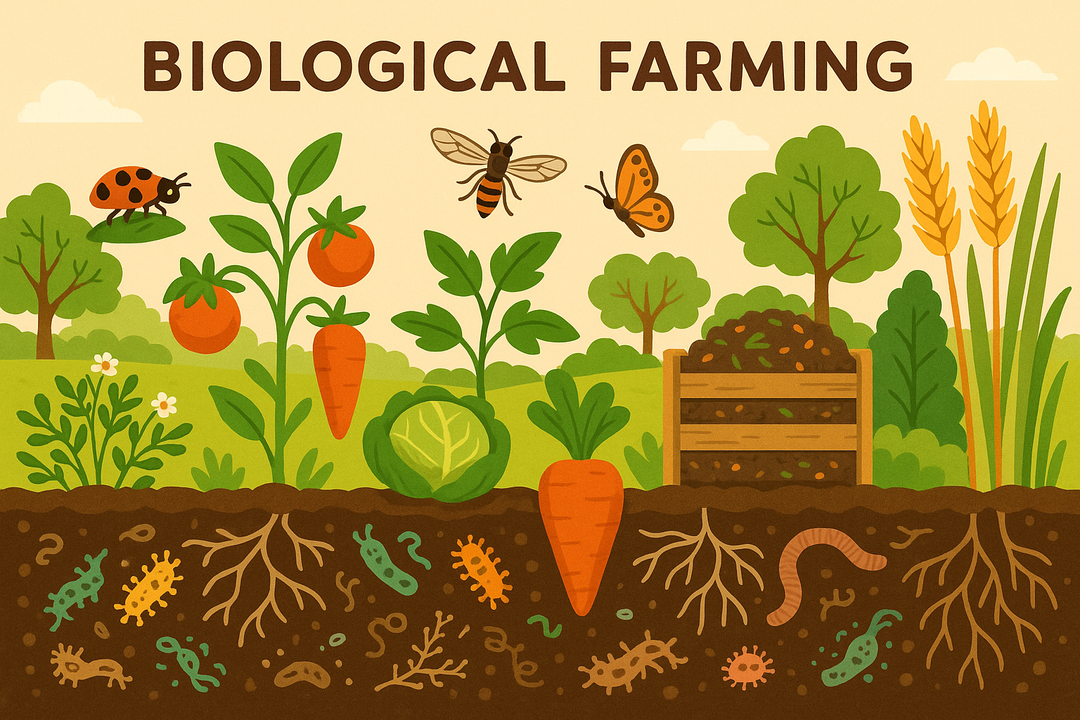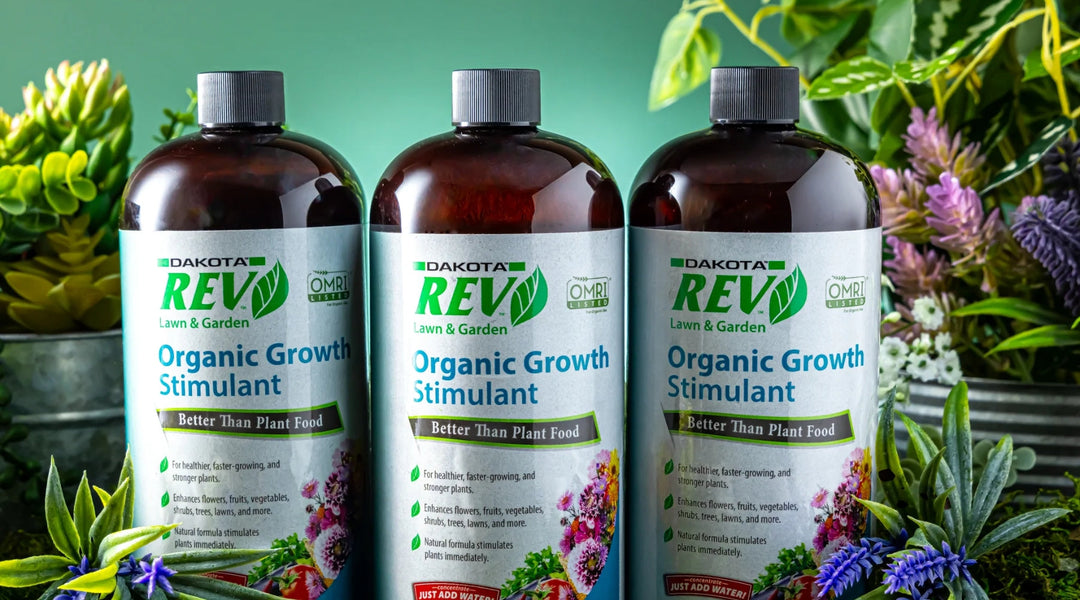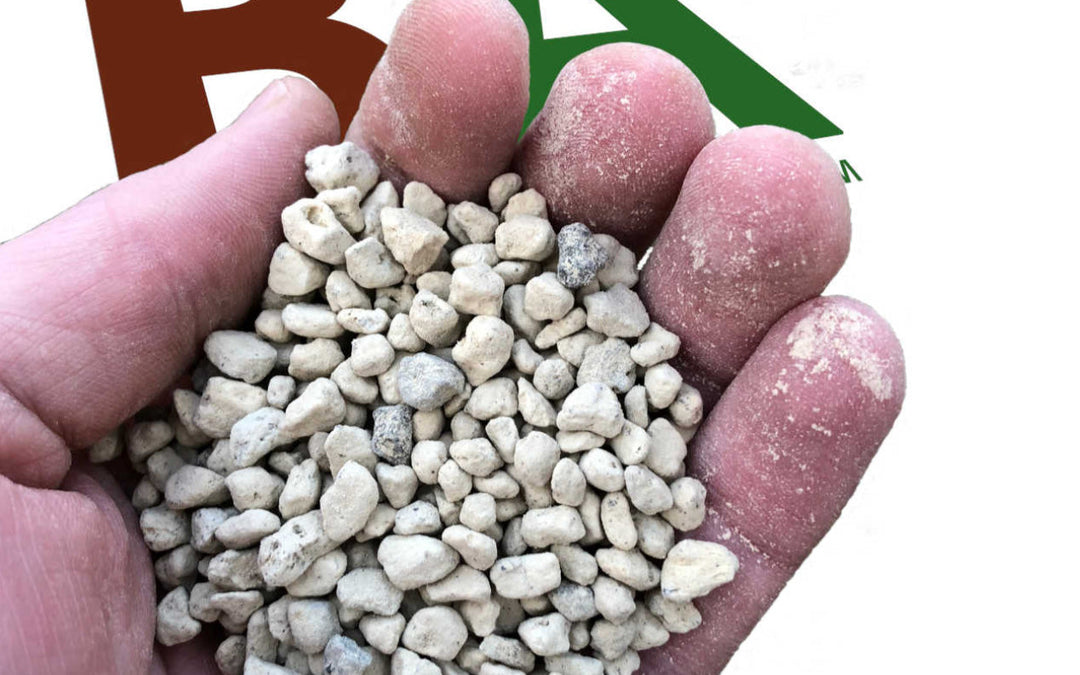Everything You Need to Know Before Fertilizing Your Lawn in Winter
One of your home’s biggest assets sits right outside—your lawn! You’ve been toiling away all spring, summer, and fall to create the best outdoor oasis. But now that winter is coming, how do you implement the best—and most importantly, right—forms of winter grass care so your lawn is ready to grow again come spring?
Luckily, we’ve got everything you need to know about grass care during the winter. You’re about to learn why fertilizing your lawn during the winter is so important, providing benefits to your yard all year long.
What is Fertilizer?
A fertilizer is a natural or manmade substance created with chemical elements to help plants grow and thrive. While the soil naturally contains components that will help plants mature, a fertilizer will boost the soil’s nutrients to support the grass you want to produce—whether you’re focused on grass care during the winter or making your lawn the greenest on the block during the spring and summer. (Often, previous plant growth will strip the soil of nutrients, making fertilizer necessary for a future healthy lawn.)
What Makes Up Fertilizer?
While organic and synthetic fertilizers are miles apart in how they’re made, they typically share several common elements—including sulfur, magnesium, and iron. However, three main ingredients stand out above the rest.
All plant fertilizer is made up of the same three basic components that work together for the overall health of the plant:
- Nitrogen (N)
- Phosphorous (P)
- Potassium (K)
The numbers found on every fertilizer label correspond to the percentage of nitrogen, phosphorous, and potassium found within the mixture. Conducting a home soil test before fertilizing your grass in the winter will help you understand what your soil needs to grow healthier grass.
What Does Nitrogen (N) Do for Grass?
Nitrogen is the key component for a grass’s stem and leaf growth. It's a necessary part of the chlorophyll process, which makes the grass leaves green and helps plants photosynthesize. Nitrogen is especially beneficial for seeding new lawn growth.

What Does Phosphorous (P) Do for Grass?
While you won’t see it hard at work under the soil, phosphorous is essential for developing the stems of grass, as well as its root structure underneath the soil. Grass leaves wouldn’t thrive and grow without the phosphorous from fertilizer.
What Does Potassium (K) Do for Grass?
Potassium acts like the legs of the fertilizer, supporting strong, healthy root formation. It helps grass absorb water more efficiently and effectively. Potassium can help a lawn tolerate certain stresses, such as disease, harsh cold, or drought.
Choosing an Organic Fertilizer for Your Winter Grass Care Needs
Before we break down the benefits of implementing winter grass care into your landscape lawn care plan, let’s dive a little into the background of fertilizer—because it’s not all created equal. When choosing a lawn fertilizer, you have two options: organic and synthetic. An organic fertilizer uses natural, carbon-containing materials like decomposed leaves, fish, animal manure, broken shells, and food compost, offering a more controlled and gradual distribution of nutrients. A synthetic fertilizer contains rock fragments and a natural or nitrogen gas and delivers its nutrients all at once, creating a potential burn hazard for your lawn.
An all-natural and organic fertilizer helps your grass develop safely, more fully, and in the most eco-friendly way possible. When you choose to use organic fertilizer for your winter grass care, the result is a great-looking lawn without the burden of unwanted chemicals polluting the water stream or endangering innocent pets or children playing in the grass.
Why Should I Fertilize My Lawn During the Winter?
You know all about using fertilizer as a main component of your seasonal lawn care routine. But have you ever thought about extending that seasonal grass care right up until winter starts?
A winter fertilizer, also known as a lawn winterizer, maintains your lawn’s health during the coldest months of the year by providing essential winter grass care benefits. It combines a special blend of nutrients to keep your yard healthy during the winter and acts as your lawn’s last defense before it goes dormant.
But you’ve got to put in the work before the first freeze hits your grass. Maximizing your lawn work in the late fall—culminating with fertilizing your grass as the winter begins—will leave you with a greener, lusher, more vibrant lawn when the spring comes.
Which Nutrients are Important When Fertilizing Your Lawn for the Winter?
When choosing a fertilizer to care for your grass through the winter, ask yourself: What type of fertilizer do I need? Answering that question means you’ve thought long and hard about how the nutrients fertilizer provides your grass will impact its rest season throughout the winter and activate its growing season in the spring.
Because winterizer is a winter grass care element applied just as your lawn is going dormant, your soil will not react well to a fertilizer equal in all three major nutrient groups (like a Perfect Blend Organic 4-4-4 Fertilizer). When determining the best methods for grass care during the winter, you need a fertilizer higher in nitrogen and potassium and low (or non-existent) in phosphorous.
Why Are Nitrogen and Potassium Helpful Nutrients for Winter Grass Care?
It’s important to remember that you’re trying to achieve different goals when fertilizing your lawn during the winter than you are when you’re waking your lawn up with fertilizer after the first thaw of spring. For one, in the spring, you’re trying to get grass to grow luscious and tall. When applying fertilizer as part of your grass care routine during the winter, it’s like you’re feeding a bear in hibernation—you’re helping the lawn to store nutrients it can feed on throughout the coldest months of the year.
Providing grass nitrogen as part of your winter grass care routine helps the lawn build up and store needed carbohydrates for the winter. As the winter can be (or at least feel) very long in some parts of the country, you should look for a winterizer that releases nitrogen slowly.
Potassium is a crucial part of your grass care routine during the winter because it strengthens the grass’s root systems and protects the yard from the stresses it will inevitably endure during the winter. Especially if you live in a bitterly cold environment that regularly endures snow and ice, this is an essential nutrient when fertilizing your lawn during the winter. You will want to find a winter fertilizer that is either equal parts potassium to nitrogen or just slightly less parts potassium to nitrogen.
Why Don’t I Need Phosphorous When Fertilizing a Lawn During the Winter?
Think about it: Phosphorous’s key mission is to help develop the stems and roots of a plant (in this case, grass) so that it’s strong and healthy. But in the case of winter grass care, your goal is to provide essential nutrients to your hibernating lawn while helping it rest up for the growing season that will come during the spring. In this instance, you’re looking for a fertilizer that includes either zero parts or very minimal parts of phosphorous in comparison to the nitrogen and potassium included in the winter fertilizer.
Which Fertilizer Is Best for Winter Grass Care?
As you’ve learned by now, applying fertilizer is a crucial component of your lawn’s health—whether it’s part of your winter grass care routine or your lawn’s spring awakening. To that year-round approach, we recommend utilizing our Microbe Manna ABC Lawn and Landscape Care Program as part of your grass care in the winter.
In the late fall, follow this protocol:
- 10-20 Pounds Microbe Manna Dry Lawn and Landscape / 1,000 sq. ft.
- 4-8 Ounces Microbe Manna Liquid Lawn and Landscape / 1,000 sq. ft.
- 4-8 Ounces Microbe Manna Flora Lawn and Landscape / 1,000 sq. ft.
- 10-20 Pounds Microbe Manna Hydrate Lawn and Landscape / 1,000 sq. ft. (Optional)
How Should You Apply Winter Fertilizer to Your Lawn?
All the products in our Microbe Manna Landscape Care Program can be applied on the same day. When applying a dry fertilizer as part of your grass care routine for the winter, use a standard broadcast, drop, or handheld spreader. A liquid fertilizer can be applied using a Chapin sprayer.
When Should I Fertilize My Grass Before the Winter Arrives?
As with so much about lawn care, your climate’s unique needs will have a say in dictating when you fertilize your lawn before the winter arrives. Applying your winter grass care before the first freeze hits is paramount—it ensures the winterizer will be absorbed properly and can release its nutrients throughout the winter.
If you live in the northern portion of the United States, you’re likely aiming to apply your grass care for winter in either late September or early October. If you’re in the southern third of the United States, you can plan to apply your winter grass care solution in late October or early to mid-November.

What are the Benefits of Fertilizing Your Grass Before Winter Starts?
Beyond the importance of the nutrients you’re pumping into your lawn as your last act of grass care before winter starts, there are serious benefits to fertilizing your lawn in the winter.
The main incentives for investing in winter grass care include:
- Root development
- Cold resistance
- Pest and disease resistance
- Jump-starting your spring lawn growth
1. Fertilizing Your Grass Before Winter to Promote Root Development
Potassium promotes root development, plain and simple. A stronger root system enables your lawn and plants to withstand freezing temperatures, a crucial component of winter grass care.
2. Fertilizing Your Grass Before Winter to Help It Resist the Cold
Fertilizing your lawn before winter helps plants build up a reserve of essential nutrients. This allows them to better resist the cold—very important for cool-season grasses.
3. Fertilizing Your Grass Before Winter to Help with Pest and Disease Resistance
Applying winter fertilizer as part of your grass care routine before winter fortifies your lawn with nutrients. Grass stocked with nutrients is then better equipped to resist disease and pests.
4. Fertilizing Your Grass Before Winter to Jump-Start Your Spring Lawn Growth
Using winterizer as part of your grass care routine before winter jump-starts your spring lawn growth. Absorbing those extra nutrients throughout the winter ensures that your grass will quickly green once spring arrives.
Important Tips for Fertilizing Your Grass During the Winter
- Conduct a soil test before applying grass care during the winter
- Don’t apply winterizer too late in the season
- Use less winter fertilizer than the packaging suggests
Conduct a Soil Test Before Applying Grass Care During the Winter
Your soil’s nutrition is important—it is vital to your grass care routine during the winter. It’s key to perform a complete soil test early in the season to learn more about your lawn’s specific soil needs. It’s also helpful to have the results analyzed using a soil test interpretation to ensure you accurately understand the results and determine the nutrients your grass needs.
Don’t Apply Winter Grass Care Products Too Late in the Season
As a rule of thumb, your winter grass care products should be applied no later than November (and earlier if you live in a cold climate). Avoid fertilizing your lawn with grass care products for the winter in early December (or later) because the nutrients won’t have time to take hold to protect the grass from harsh weather and conditions.
Use Less Winter Grass Care Products than the Packaging Suggests
When applying grass care for the winter, whatever you do, be cautious of the amount of fertilizer you apply. Use one-third to one-half of the recommended amount of fertilizer, both to save money and to avoid overfertilizing.
What You Need to Know Before Fertilizing Grass During the Winter

And finally, a big and important to-do: Check your U.S. state laws before fertilizing your lawn during the winter. Some states restrict the use of lawn fertilizers as an active part of grass care during the winter. Research your state’s requirements before moving forward with a winter grass care landscape plan that includes fertilizing.
Overall, having a grass care plan in place before winter starts is the number one way to ensure you have the healthiest lawn on the block come spring. While winter grass care is nuanced, with RMBA’s line of lawn care landscape products, we’ve done the hard work for you, so you have time to enjoy the season without worrying about your lawn!











Leave a comment